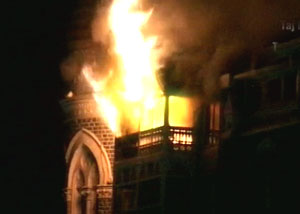
The terrorist attacks in Mumbai last month were Twitter’s coming out party, according to the New York Times. Eyewitnesses used Twitter and their personal blogs to describe what was happening, both to the outside world and to their fellow citizens locally. It was citizen journalism in its purest form.
A few days later, Jeremiah Owyang of Forrester sounded my wake-up call: Now that social technologies are becoming mainstream, do your crisis communications plans account for them?
For us, the answer was no. It’s time to change that.
In the aftermath of September 11, I led a team that drafted a new crisis communications plan for the Massachusetts Medical Society. It covered every scenario we could think of, from the beginning of the crisis to the post-crisis follow-up. Some time later, another MMS team created a comprehensive business continuity plan.
Both plans employ the communications technologies that we had seven years ago: Mainstream media, websites, e-mail and phone. But today, we also have blogs, twitter, Facebook, SMS, and more. As Mumbai demonstrates, these tools cannot be ignored.
So what would crisis communications look like with those tools? Here are two glimpses of what that world could look like.
When floods devastated farmland in Iowa this spring, a web design firm in Iowa created iowaflood.com. It aggregates all sorts of RSS feeds into a single portal. Even today, five months later, you can read Twitter updates, videos, blogs, and so forth. It’s very cool, and it’s possible to replicate this if you have the chops to pull this off in the heat of a crisis.

When Hurricane Ike barreled into the Galveston, Texas, last September, the Texas Medical Association’s county medical societies worked with the state to fill resource needs, and the TMA became the communications platform between the doctors in the middle of the mess, and the rest of the state.
Steve Levine, TMA’s communications director, created Voices of Ike, a compelling blog that now reads like a hurricane diary in the doctors’ voice. To prepare, he recruited several doctors beforehand to e-mail him regularly about what was going happening during the preparation, mid-storm, and cleanup. He posted their running commentary on the TMA’s blog, its Twitter profile, and other vehicles.
Steve did the publishing because he knew his doctors didn’t want to learn about blogging technologies during this crisis. He was more interested in getting an authentic, real-time a record of what their eyes, ears and hearts were experiencing. He took care of the rest. “I did only a little editing,” he told me.
It served three benefits, he says. First, it informed people about what was going on. Second, it was a real-life opportunity to show the public what doctors do. Third, it was an outlet for doctors who wanted to share their experiences. As we know from Forrester’s social technographics research, not everyone is interested in doing that. But those who do so provide an incredible service.
So we’ve got some work to do on our crisis plan. Among the considerations:
- It has to encourage two-way communication. We need to use every vector to get the word out; that’s a given. But there’s another new domain. We need to open up these same vehicles for people in the field to describe what’s happening, what they need, and to anticipate where the next problems will be.
- We need to carefully choose the vehicles that our members will be using. Economy of effort is important when a crisis strikes. There will be little tolerance for wasteful action.
- It’s clear that mobile technologies will be at, or near, the top of the list. We’re not particularly well prepared for that.
- What if there are malicious posts, or well-meaning but erroneous posts? What if these posts harm people? I cannot ignore the legal issues.
Things to think about. Your thoughts?
Thanks for the coverage, Frank. More importantly, you’re making us all re-think how new media change our approach to crisis communication. Keep up the good work.
Perhaps you could spearhead (crowdsource?) a mini-manual of basics Crisis Management for and by Associations